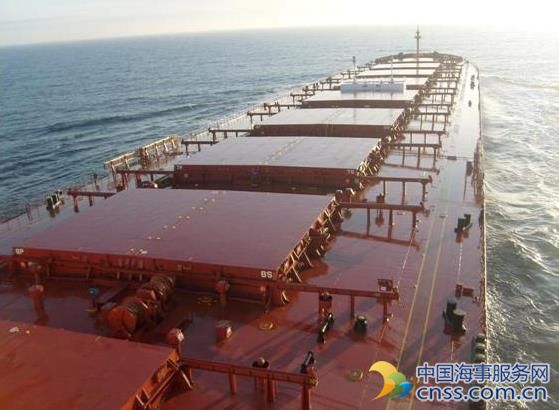Drewry: Slow Dry Bulk Market Recovery Is Underway
Drewry: Slow Dry Bulk Market Recovery Is Underway

Moderating vessel supply growth over the next few years, combined with a mild improvement in the outlook for seaborne trade, is set to enable a reduction on chronic overcapacity and so mark a recovery in the dry bulk shipping market, according to shipping consultancy Drewry.
Capesize one-year time charter rates are expected to double over the next five years from the lows of 2016.
The reasons for a sharp contraction in the supply and demand gap are improving demand outlook coupled with a slowdown in vessel supply due to high scrapping and continued low deliveries along with scarce new-orders.
“Dry bulk shipping has bottomed out and a market recovery is underway, albeit a slow one,” Rahul Sharan, Drewry’s lead analyst for dry bulk shipping, said.
The impending additional cost of installing Ballast Water Treatment Systems (BWTS) will force owners to keep sending younger tonnages to scrapyards, Drewry said, adding that owners have hardly been able to cover their operating costs and “the additional cost will mean increasing losses.”
The continued scarcity of private equity has controlled new orders this year and investors are expected to keep shying away from the dry bulk market, thinning the orderbook even further over the next two years. This will ensure that deliveries remain low which in turn will limit supply growth.
“With investment remaining out of reach from dry bulk owners, even a modest growth in demand will help support market recovery. Meanwhile, the increasing cost of running an old ship will mean more vessels go to scrapyards, tightening supply over the next five years,” Sharan added.
By contrast, demand for dry bulk shipping is expected to grow strongly, as Brazil’s increasing share of Chinese iron ore imports drives higher tonne mile demand. Even if the Chinese iron ore trade does not rise as anticipated, a shift of sourcing towards Brazil will mean that the demand for ships will increase many fold, according to Drewry.
Asian countries, including Vietnam, Korea and Taiwan are expected to ramp up coal imports as they open more coal-powered generating plants to support their growing demand for energy. Drewry is expecting coal demand to keep increasing over the next five years.
HEADLINES
- Do shipping markets want Biden or Trump for the win?
- All 18 crew safe after fire on Japanese-owned tanker off Singapore
- Singapore launching $44m co-investment initiative for maritime tech start-ups
- Cosco debuts Global Shipping Industry Chain Cooperation Initiative
- US warns of more shipping sanctions
- China continues seaport consolidation as Dalian offer goes unconditional